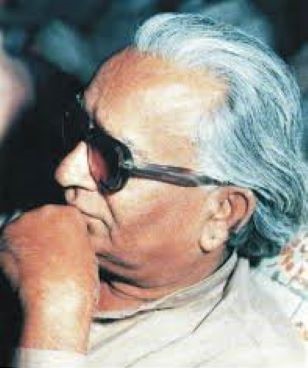
Rashidi, who authored, co-authored, edited, compiled around 60 books in Sindhi, Persian, and Urdu, didn’t receive any formal schooling
By Muhammad Habib Sanai
Illustrious researcher and historian of Sindh, Syed Hussamuddin Rashidi, was born on Wednesday 26th Ramzan, 1329 AH /20 September 1911 CE in a small hamlet called Bahman near Nusrat Railway Station, District Larkana, Sindh and he left for his eternal abode after a long illness on Thursday 6 Jamadi II 1402 A.H. / 01 April, 1982 CE in Karachi, Sindh. As per his last will, he was buried at the famous Makkli Necropolis, Thatta.
Troubled Birth and Early Life
His birth was very tormenting. His elder brother Pir Ali Muhammad Rashidi (August 5, 1905–March 14, 1987), who later became a prominent leader of the Pakistan Movement, ex-Federal Minister, Ambassador, Journalist, and writer, has written this terrible account in his article about Hussamuddin Rashidi. He writes: “… For three days, my mother endured the labor pains and we were afraid that the fetus (infant) might have died. How come there is a qualified nurse or doctor in our village? And it was taboo to take ladies to any Hospital, so there was no question about taking our mother to any Hospital. Further, at that time, no qualified MBBS doctor was working in both districts of Larkana and Sukkur.
“In these distressed and grieving moments, my grandfather sent for his lawyer friend Shaikh Ghulam Muhammad from Larkana, who was also a renowned astrologer. After making a horoscope, he told our grandfather in the morning that the child would born alive before evening and the newborn would be very fortunate and make his name well-known.
“During the afternoon, news came from the home that a boy is born, but his eyes are almost missing. As per the tradition, after bathing him, he was brought out by Dai (traditional birth attendant/midwife) who handed him over to our grandfather. Shaikh sahib was also sitting nearby. The eyes of the neonate were completely shut and mucus was exuding from them. Grandfather got so shocked and grieved, that he immediately handed him to Shaikh Sahib and said:
“O’ fake oracle! Take him. You said he would be very lucky and would make a name, but he doesn’t have eyes, how would he make his name?”
“Shaikh sahib took the newborn in his lap and smiled. Then he said:
“O’ Saeen Pir Shah! Don’t worry, my horoscope is accurate. His eyes will work and would work in such a way that the world will be surprised.”
“Our grandfather named him after his elder brother Hussammuddin Rashidi. He treated his eyes because he was an expert Hakeem and soon his eyes got cured.”
Education
Syed Hussamuddin Rashidi authored, co-authored, edited, annotated, compiled, revised, and supervised around 60 books in Sindhi, Persian, and Urdu. Interestingly he didn’t receive any formal schooling. How he and his elder brother Pir Ali Muhammad Shah Rashidi were educated, let’s refer to once again the account of Pir Ali Muhammad Rashidi.
“I am six years senior to Hussamuddin. When I was three years old, the Mullah (semi-literate religious teacher) of our village was tasked by our grandfather to teach me Jami’s Yousif Zulekhan in Persian. As Sindhi was our mother tongue, so our parents thought it unnecessary to learn it in school. Further, we were not supposed to be recruited for the service of the British Government, so there was no need to learn English. As such, the full emphasis was on learning Persian. But Persian learning remained in the doldrums because Mullah had two wives, who mostly used to quarrel with each other when he had just commenced to teach us. Consequently, he used to go inside and took time to come back. After a long and tiring wait, we would return to our home.
“After the demise of that Mullah, another Mullah was arranged. Now Hussamuddin also accompanied me. This new teacher believed in the motto that ‘Harshness of the teacher is better than the affectation of father’. He used to thrash students and they were so afraid of him that they forgot their lessons when they were asked to recite their lessons.
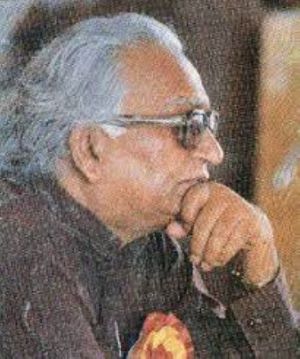 “Unfortunately, one day he slapped Hussam. Hussam became so angry that he pulled his beard. That was a horrible incident. In support of my brother, I wrapped the thatched mat over me and blurted some bad words. Molvi sahib reported this mishap to our Grandfather. However, it was decided that as both children are intelligent, and if they were treated harshly, they wouldn’t study, so better to leave them to pursue on their own.
“Unfortunately, one day he slapped Hussam. Hussam became so angry that he pulled his beard. That was a horrible incident. In support of my brother, I wrapped the thatched mat over me and blurted some bad words. Molvi sahib reported this mishap to our Grandfather. However, it was decided that as both children are intelligent, and if they were treated harshly, they wouldn’t study, so better to leave them to pursue on their own.
“Interestingly, after that occurrence, the behavior of our teacher changed and he dropped the stick. Besides, our mother had also sent her maidservant and sought forgiveness on our behalf and gave some gifts. Now we started learning with devotion… but soon, Mullah left this job. Then at first a Molvi from the Thar area was recruited but he could not stay, later An English-literate teacher from Tonk State was hired, but he also left the job.
“My Education journey ceased there, but for Hussamuddin, another teacher Muhammad Ilyas was hired. He was very handsome and his voice was also sweet. A Sikh carpenter used to live in our village to make furniture for my grandfather. He had married a young girl in old age. His quarter was near to Masjid. After the lapse of a few months, he expressed his doubt that the voice of Azan was affecting his wife, so he started planning to kill Molvi, therefore, for his safety, Molvi was asked to leave this Village.”
These incidents disrupted their private tutoring. On the insistence of their mother, they tried to learn English from a Station Master posted at the nearby Nusrat Railway Station. As his English was poor, they could manage to learn only a limited stock of words. As there were no further prospects of learning, therefore, Hussamuddin got involved in playing the games.
“While playing, one day, he (Hussamuddin) suddenly came into my room and began dangling my books kept in the tin box. I got angered and yelled at him “O ignorant! Don’t touch my books.” He sadly looked at me and said “Am I ignorant? Okay, Ada.”
“After that incident, his temperament changed and he gave up frolicking activities and came close to me and followed me in every respect. He started reading everything. Whenever he met any well-read person, he conversed with him and learned new ideas. After having dinner, he used to read in the light of lantern for hours.”
Literary and Journalistic Career
Probably at the age of 14, he commenced composing poetry under the pen name of Fidai Al Rashidi, which name he also used in his fiction works, such as his novel Al Zulekha and other short stories published under the pen name of Fidai Al Rashidi.
Soon he also launched his career as a journalist by assisting his brother in editing the bi-weekly Newspaper Sindh Zameendar during the twenties of the last (20th) century. This newspaper was published by the late Ayoub Khuhro (1901-1980), leader of the Pakistan Movement and former Chief Minister of Sindh. After developing the differences with Khuhro, they both resigned and launched their bi-weekly newspaper Sitar-e-Sindh. Simultaneously, Hussamuddin Rashidi also used to edit Sindhi literary monthly magazine Almanaar, Sukkur. Almannar was published and printed by Molvi Hafiz Abdul Hameed Bhatti, who was the father of renowned writer and political activist Rasheed Bhatti (1933-1986).
During this period, Rashidi Sahib not only wrote journalistic pieces but also wrote fiction and historical articles. According to Dr. Ghulam Mohammad Lakho, one of his oldest available write up is entitled “Kachey jo Sair” – Travel through Katcha (Riverine) area, which was included in the anthology “Bahaar Nasar” (Spring of prose) compiled by renowned author Bherumal Mehrchand ((1875/76 – 7 July 1950) and was published in 1932.
Support to Contemporary scholars and fellow researchers
Throughout his life, Rashidi Sahib encouraged and extended moral and other support to his contemporary scholars, fellow researchers, and students. Dr. Haroomal Sadarangani ‘Khadim’ (1913-1992) recounts such a gesture of Rashidi Sahib: “My first meeting with Hussamuddin took place in June, 1941 near the tents erected outside his village. I was teaching Persian at Diyaram Sindh College, Karachi, and was touring interior Sindh for the collection of material for my Ph.D. thesis about Persian poets of Sindh. In the scorching heat of June, I reached Nusrat Station around 2.30 pm. There was neither any porter nor any animal available, so I handed my bag and bed to the station master and started walking to Bahman…When I reached there and told him about the purpose of the journey, he said that I should have informed him prior so that he would have arranged any vehicle for me…I stayed there for a week, and not only enjoyed his hospitality but also saw rare manuscripts and books. Further, he gave me the addresses of numerous libraries and introductory letters for some persons…”
At the age of 14, he commenced composing poetry under the pen name of Fidai Al Rashidi, which he also used in his fiction works
According to historian and scholar Dr. M. Salim Akhtar, Rashidi sahib played an important role in the writing and editing of numerous books published by Sindhi Adabi Board, Jamshoro, especially in the writing of two-volume History of Kalhoro (Urdu) by Ghulam Rasool Mehar and Burhanpur ke Sindhi Aulia by Rashid Burhanpuri. Not only that, he also provided manuscripts with other possible help in editing other books, for example, he provided manuscripts of Tuhftul Tahirin by Shaikh Azam Thattvi (1956), Diwan-e-Muhsan Thattvi (1963), Fateh Sindh Nama by Azimuddin Thattvi (1967)…Also, some other books could not have been published, had Rashidi not taken a personal interest in their publication…Mujmaal Shuara Jehangiri by Mullah Qaati Harvi is one prime example. It was edited on his insistence when he was out of Pakistan for his medical treatment…In 1957, an Afghan scholar Abdul Hai Habibee (1910 – 9 May 1984), was living in Pakistan as exile…Rashidi sahib gave him his prepared notes, other related research material, and two manuscripts of Taza Nawae Maaruk by Atta Mohammad Shikarpuri for editing. This book was published under his supervision by the Sindhi Adabi Board in 1959…International scholar Annemarie Schimmel (7 April 1922 – 26 January 2003) visited Pakistan for the first time in 1958 and developed cordial relations with Rashidi. She has dedicated her book Pain and Grace to him in gratitude. Dr. M. Saleem Akhtar himself dedicated his book Sind under the Mughals and in his acknowledgment he wrote that “among the private libraries I had the privilege of working during my field trip, the library of the late Pir Hussamuddin Rashidi was the most outstanding. The richness of his collection of rare sources on the history of Sindh, the selfless manner in which that great scholar opened its doors to me, and the deep interest he showed to the last in my academic pursuits are things words fail to describe adequately.”
Passion for History and Persian Studies
When Pakistan came into being, he settled permanently in Karachi and took a new turn in his literary and academic career. He now become a full-time scholar of Sindh studies with a special interest in Persian Studies. In the words of Mr. Rashid Bhatti, “Pir sahib started his writing career as Fida-i Rashidi and ended as a devotee of the history of Sindh. He devoted his life, time, resources, and even time of recreation towards History.”
According to historian and researcher, Dr. Ghulam Muhammad Lakho, “History writing and hagiography in Persian commenced in Sindh during the reign of Nasiruddin Qabacha (d. 1228) in Uch, where Qabacha used to host literary and scholarly gatherings. In this period, Ali Bin Kufi translated an Arabic work into Persian during 613 A.H/1216, which is known as Chachnama. Muhammad Ufi wrote biographies of numerous poets in a book entitled Lub al Lubab in 625 A.H/1227. In the reign of Arghuns and Turkhans, Persian became the official language and up until the British period, numerous works of historical importance were composed, including the works of Mir Ali Sher Qani (1140-1203/1727-89), who took the Persian Historiography of Sindh to the highest pinnacle. However during the British period, Persian was in such a decline that a proverb came into currency: ‘If you study Persian, then you will sell oil.’”
Dr. Lakho pronounces that we are thankful to Diwan Nandiram (1819-1875), Mirza Qalich Beg (1853-1929), and Dr. U.M Daudpota (1886-1958), who during the British period, translated and edited these early histories in Sindhi and English, and introduced the modern methods of research, compilation, editing, and criticism.
“At first, it was Molana Deen Muhammad Wafai (1894-1950), who realized the importance of works written in Persian. He not only wrote about the History of Sindh but also visited several Madressas (religious seminaries) and libraries and collected a lot of Persian manuscripts.
“It is indeed true that Molana Wafai was the first person, who invited our attention to writing History of Sindh in the light of oriental studies. Dr. Daudpota edited some Persian books about Sindh, but it would not be an exaggeration to say that their contemporary Hussamuddin Rashidi did quality work on such a scale that Mir Qani was unable to perform.
Mr. M. H. Panhwar (1925 – 2007), another important Sindhi Scholar asserts that Pir Husamuddin “as a historian, has limited himself to the Persian histories only…The Persian texts edited by Hussamuddin were all written between 1539 and 1700 AD, except two, the books “TUHFAT-UL-KIRAM” and “MANSOORUL WASIAT” which were written in 1753 and around 1776…Thus Husamuddin is an important historian of Sindh for the period between 1500-1753 AD which embraces:
* Fall of Sammas.
* Rise and fall of Arghuns and Tarkhans.
* Mughal conquest of Sindh and its rule.
* Decline of Mughal power in Sindh.
* Nadir Shah’s blow to Kalhora’s future in Sindh.
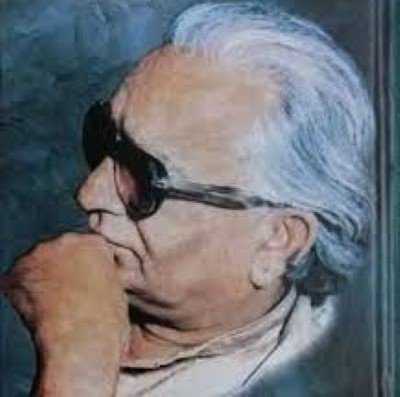 Persian histories were written by the authors, who were mostly either in service of foreign rulers and invaders or belonging to their clan, but the praiseworthy role of Syed Hussamuddin Rashidi is that he used the same material to depict the actual predicament and plight of native people of Sindh, hence helped in writing the history of Sindh from the point view of native people of Sindh. Rashid Bhatti writes “No doubt, Pir Sahib gave a new and appropriate turn to the History and historiography of Sindh. Prior, our history used to present only the perspective and point of view of foreign rulers, conquerors, and invaders. It was Rashidi sahib, who first time undertook a true and correct analysis of that history. He analyzed history from the perspective and point of view of oppressed and ruled ones and laid the foundation of new historiography. It is due to his efforts and analysis that our past and history are being presented in their real light and perception. Today research and writing of the history of Sindh is not being carried out based on the standpoint of conquerors and invaders but according to the principles of nationalism, public perspective, and scientific research.”
Persian histories were written by the authors, who were mostly either in service of foreign rulers and invaders or belonging to their clan, but the praiseworthy role of Syed Hussamuddin Rashidi is that he used the same material to depict the actual predicament and plight of native people of Sindh, hence helped in writing the history of Sindh from the point view of native people of Sindh. Rashid Bhatti writes “No doubt, Pir Sahib gave a new and appropriate turn to the History and historiography of Sindh. Prior, our history used to present only the perspective and point of view of foreign rulers, conquerors, and invaders. It was Rashidi sahib, who first time undertook a true and correct analysis of that history. He analyzed history from the perspective and point of view of oppressed and ruled ones and laid the foundation of new historiography. It is due to his efforts and analysis that our past and history are being presented in their real light and perception. Today research and writing of the history of Sindh is not being carried out based on the standpoint of conquerors and invaders but according to the principles of nationalism, public perspective, and scientific research.”
In the preface of a book, a collection of articles of Rashidi, written during the period 1930-1980, entitled Galiyoon Goth wanan joon (Tales of hamlets and trees), Mohammad Ibrahim Joyo, while terming that book a comprehensive one, opines that “But the worth of writer of this book is much more, [because] Pir sahib, besides this book, for the Sindh studies, has taken a great many efforts in the basic research, compilation, and editing of History of Sindh, which is great and unprecedented…”
Years ago Rashidi sahib himself talked about his role in developing a new historiography of Sindh in such words: “Since long I am a student of History. I saw those old histories of Sindh were composed only in favor and praise of conquerors of Sindh and Sindhis were called people of low and disgusting race. In this wickedness, both Sindhi and non-Sindhi historians were involved. These histories were written in Persian, because Persian after Arabic was the language of Arghun, Turkhan, and other conquerors. During the reign of the British, histories started to be written in Sindhi, but Sindhi historians also repeated the same mistake and called our conquerors as Zill-e-Allah (Shadow of Allah). My service is that I have exposed all criminals, murderers, and revolt makers and also the persecution, coercion, and terrorism they inflicted upon Sindh and its residents, I have unveiled it in my writings. As such, I have given a new turn to the historiography of Sindh and I am proud and content about my role.”
Criticism
Dr. Mubarak Ali (b. 1941), a distinguished progressive historian, in his book entitled Tareekh aur Danishwar, has accused Rashidi sahib without naming him that “Some people are not intellectuals, but desire to be known as intellectuals, [so] they get prepared books from others on payment, and then publish them under their names…After partition, numerous scholars of Arabic and Persian migrated to Pakistan and were facing financial hardships. Taking advantage of their plight, a famous intellectual of Sindh, who has received many rewards and medals from the governments of Iran and Pakistan, paid them to write books and got them published under his name and became a famous researcher and intellectual.” Renowned researcher and scholar of Urdu Studies, Mushfiq Khawaja (1935-2005) took a strong exception to these frivolous and unjustified remarks and wrote that a historian writes in clear terms, but Dr. Mubarak Ali without naming Pir Hussamuddin Rashidi has blamed him that he used to get his books written by others on payment. Only the person, who has not seen the books of Pir Sahib, could utter this vain claim, whereas the majority of works of Pir Sahib are in Persian, and Persian for Dr. Mubarak is like Hebrew because he has only relied on Urdu or English translations of Persian sources referred in his books…Indian Scholar Syed Sabahuddin Abdul Rehman has praised Pir Hussamuddin for his expertise in Persian and the high standard of his research. Further, Dr. Sahib has kept the names of scholars who wrote books for Pir Sahib in secret. He should divulge the names of those persons and also enlighten us about the works, these scholars have published under their names.”
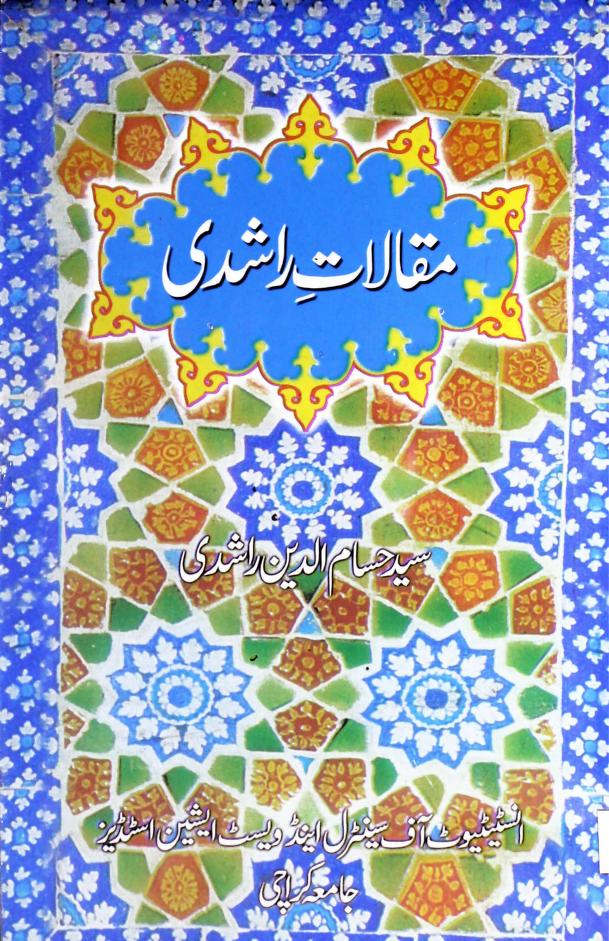 Ironically in some circles of Sindh, propaganda is spread that Pir Sahib did not know the Persian. How it would be possible that a person who does not know Persian, is bestowed with an honorary Ph.D. degree by the Iranian government based on his scholarship in Persian Studies? Numerous scholars have expressed their delight in his Persian proficiency. Well-known Pakistani Scholar and historian, Dr. Riazul Islam compliments his adeptness over Persian in such words: “In Pakistan, there is the dearth of such persons, who have such mastery over Persian, as was attained by Pir Sahib. He knew well old, middle, and modern versions of Persian on the same scale…Not only he could converse fluently but also made laudable speeches in Persian.”
Ironically in some circles of Sindh, propaganda is spread that Pir Sahib did not know the Persian. How it would be possible that a person who does not know Persian, is bestowed with an honorary Ph.D. degree by the Iranian government based on his scholarship in Persian Studies? Numerous scholars have expressed their delight in his Persian proficiency. Well-known Pakistani Scholar and historian, Dr. Riazul Islam compliments his adeptness over Persian in such words: “In Pakistan, there is the dearth of such persons, who have such mastery over Persian, as was attained by Pir Sahib. He knew well old, middle, and modern versions of Persian on the same scale…Not only he could converse fluently but also made laudable speeches in Persian.”
Dr. Mubarak Ali, a progressive historian, in his book entitled Tareekh aur Danishwar, has accused Rashidi without naming him that a famous intellectual of Sindh, who has received many rewards and medals from the governments of Iran and Pakistan, paid others to write books and got them published in his name
According to Shaikh Ayaz (1923-1997), a well-known Sindhi poet and writer, “Rashidi had a passion for Urdu and Persian Ghazals…[One day] unexpectedly he asked me to recite couplets from Persian Ghazal, so I spontaneously recited:
بوےء بوےء مولیاں آید ھمی، یاد یار مہربان آید ھمی
After listening to it, he promptly remarked that don’t consider him a novice by reciting Shibli’s Shah al Ajam. “Tell me the verse, which I might not have heard.” After a pause, I recited the following stanza:
از جبس نسیم سحر گاھ لالہ ھا، بریگ دگر زندند چون مستان پیالہ ھا۔
(With the air of dawn, flowers of tulips are striking each other with cups like intoxicated.)
“Wow. What a poem!” Rashidi exclaimed. Then asked me: “Do you know, who the poet is?” I replied: “I don’t know.” Then he informed me that the name of the poet is Ahmed Shaqaqi, who is not widely known.
Services for the Promotion of Urdu
Interestingly his services for the promotion of Urdu in Pakistan are also unmatched, as evidenced by the opinions of some scholars of Urdu studies. Dr. Jamil Jalibi writes that not only due to the great efforts of Pir Hussamuddin Rashidi, the personal office of Anjuman (Anjuman Taraqqi-e-Urdu Pakistan) acquired but also he helped it in these troubled times as acknowledged by Molvi Abdul Haq.
Rashidi Sahib was not only a member of the Executive Committee of Anjuman but also served as a member of the Editorial Board of the periodical Urdu published by it.
According to Dr. Muhammad Ayoob Qadiri, he was one of the founders of Urdu College, Karachi. When the Central Board for the Promotion of Urdu was established, he was appointed there as Editor, and in this capacity, he supervised numerous publications of historical treatises. Also, he was an active office bearer of Idarae Yadgar Ghalib, Karachi.
Associations with other organizations
Rashidi sahib actively participated in the establishment and development of numerous literary and academic organizations. He was a founder member of the Sindhi Adabi Board and Institute of Sindhiology. According to Dr. M. Salim Akhtar, “Pir Sahib provided excellent services as an active member of the Board of Governors of numerous academic and research organizations. In this capacity, one of his prominent services is that under his advice, the basic source material for Medieval History was edited and translated into standard Urdu. From 1963 to 1970, Pir sahib was a member of the governing body of the Research Society of Pakistan of the University of Punjab. This institute after years of struggle published some very precious Persian books related to the history and culture of Muslims of South Asia…However, after Pir Sahib’s parting, this society could not sustain its momentum…In the 19th century, the Royal Asiatic Society of Bengal under the Bibliotheca Indica series published innumerable basic source books, which were not easily available and accessible…Pir Sahib advised for their translation into Urdu and got approved a project through the Central Urdu Board (now Urdu Science Board)…For the implementation of this scheme, he not only provided experienced researchers and translators but assisted the Board in every possible way. As a result, the Board published very valuable works.”
What do contemporary scholars and writers say about him?
Most of his contemporaries have praised his scholarship and devotion to the History of Sindh. Some excerpts from the articles written about him by some of his contemporaries are being presented, which may help anyone to weave his persona and scholarship.
Dr. Riazul Islam (1919-2007) was a renowned scholar of Pakistan. He reminisces: “It was the early portion of the year 1953 when I joined the Department of Archives as Deputy Director. The Book section was also assigned to me. The national library was being established. The Ministry of Education has constituted a committee, which included Pir Hussamuddin Rashidi for the selection and procurement of books. I have heard about him, but we met personally in that first meeting of the committee. Whenever he spoke about any book, he delineated its different editions, subject matter, etc. His manner was solemn. This meeting, despite being conducted in an official environment, left a good impression on me…Often, when we failed to locate any book in the library of Karachi University, we used to visit him at his house and fulfill our needs…In Baitul Zia [the name of the house of Pir Husamuddin] there was a small room, which was used as his study and working office…Almost every researcher of repute had visited this room and enjoyed the hospitality of Pir Sahib…His knowledge and mastery of Persian were at such levels that only a few persons in Pakistan might have the same competency…His unfinished works included editing of Tarikh Rasheedi by Mirza Hyder Dughlaat…When in January 1982, he was leaving for London, he handed Rotographs and clear copies to me and Prof. Mahmoodul Hasan.”
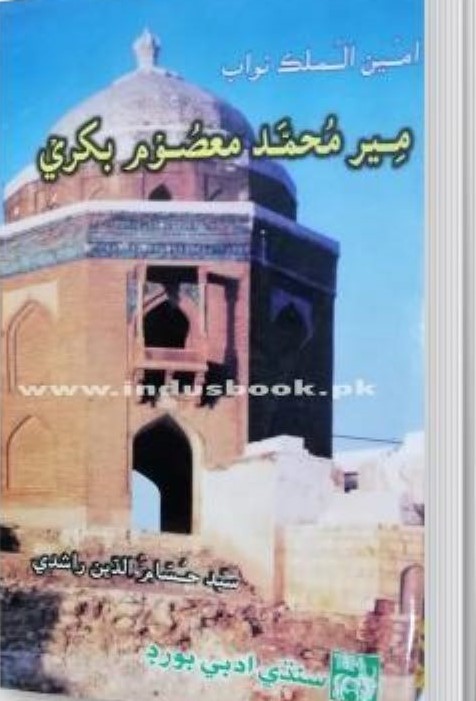 According to famous scholar Aijazul Haq Qudoosi “One of the greatest favor of Rashidi upon Sindh is that when due to scarcity rather an unavailability of material, History of Sindh was almost lost in darkness, he edited the basic resources by using scientific, rational and accurate methods and wrote comprehensive notes, annotations, and explanations. In such a way the History of Sindh reached the public. The majority of the source materials are edited by him.”
According to famous scholar Aijazul Haq Qudoosi “One of the greatest favor of Rashidi upon Sindh is that when due to scarcity rather an unavailability of material, History of Sindh was almost lost in darkness, he edited the basic resources by using scientific, rational and accurate methods and wrote comprehensive notes, annotations, and explanations. In such a way the History of Sindh reached the public. The majority of the source materials are edited by him.”
Dr. Rauf Parekh, renowned Scholar of Urdu Studies and Lexicographer writes that “Rashidi Sahib had a penchant for research and research techniques. Not only he wrote research papers and books but also remained associated with several institutions for about half a century and all these institutions benefited from his knowledge and insight. These are the National Museum of Pakistan, Karachi; Anjuman Taraqqi-i-Urdu, Karachi; Urdu Dictionary Board, Karachi; Urdu Science Board, Lahore; Idara-i-Yadgar-i-Ghalib, Karachi; Majlis-i-Taraqqi-i-adab, Lahore; and many others.
“In every literary and scholarly body, Rashidi Sahib remained in touch with relevant personalities and helped initiate projects relating to the editing and publishing of rare books. Many books were translated into Sindhi or Urdu from other languages, especially English and Persian. Such books include the famous Chach Nama, as well as lubul-albaab , Hadiqat-ul-aulia , Tareekh-i-Masoom , Tareekh-i-Nasiri , Nusrat nama tarkhan , Rozat-us-salateen and many many more. He also edited and published, through different institutions, books on life and selected works of classical Sindhi poets.
“Rashidi Sahib had realized that the taste for Persian in the subcontinent was on the decline and neither was there any hope for its revival. So he, using his influence, tried to get classical texts and historical accounts translated into Urdu and Sindhi. He believed that in that way they would be accessible to general readers. That’s the reason why he worked systematically to get transfer the authentic accounts of the Muslim era in South Asia into these languages,” wrote Dr. Moinuddin Aqeel.
“Rashidi Sahib was as unbiased and non-partisan as a true scholar is expected to be. In his youth, he was an avid reader of Urdu literature. Later, he not only wrote books in Urdu but worked with the institutions working for the promotion of Urdu. Many scholars of Urdu were his close friends. He was a bridge between the scholars and intellectuals of Urdu and Sindhi and brought them closer. Both Urdu and Sindhi benefited from his friendly and scholarly personality. His work in different fields surpasses the collective works of some institutions. He was an institution unto himself.”
Travels and Visits Abroad
In 1950, he accompanied his elder brother Pir Ali Muhammad Rashidi on tours of Egypt and London. In Cairo city, he met Dr. Taha Hussain, a famous scholar, and other intellectuals. In London, he spent most of his time in the British Museum and the libraries of Oxford and Cambridge. He also visited numerous bookstores. At that time, there was a big carnival being held in London. When his brother asked him to attend the functions of the carnival, he refused and told his brother that it was better to visit and see the academic treasures of London. He purchased a lot of books, and to carry them back to Karachi, they had to leave their bags of clothes and other possessions there.
Further, he frequently visited Iran, where he used to present papers at international conferences on history and literature.
Scholarship and works
Rashidi sahib has written, co-written, edited, annotated, compiled, revised, and supervised around 60 books in Sindhi, Urdu, and Persian languages. He launched his writing career as a poet, but soon he joined journalism and started writing also fiction. However, his last thirty years were spent in writing, editing, compiling, revising, supervising, and annotating numerous books about History and biographical sketches.
Noted Sindhi writer and political activist Rasheed Bhatti (1933-1988) has mentioned names of his fiction work such as Al Zulekha as a novel and Amaanat, Gulan waree Chokri, Pakdaman Aurat, Anarkali as Short stories. However, Dr. Ghulam Muhammad Lakho terms Al-Zulekha as a long short story or a novella.
Health Conditions and Last Days
In late 1958, Rashidi sahib sustained a severe heart attack and remained bedridden for three months. He has written in his memoirs that there seemed no chance of recovery, therefore, he got afflicted with a nervous breakdown. On the Doctor’s advice, he proceeded to Manila, where at that time his elder brother was working as Ambassador of the Pakistani Embassy in Manila, Philippines. There he underwent every suggested treatment but his condition could not improve. At last, after the lapse of more than a year, a Doctor was found, whose treatment resulted in improvement in his health. After some respite in his ailment, during that sojourn, he wrote memoirs in Sindhi, which were published as a book entitled Hoo Dothi hoo Denh. After two years, he returned with a set of restrictions imposed by the Doctor that he wouldn’t involve himself in any tedious work. But very soon he indulged in writing, editing, and compilation and further, he used to work for long hours daily.
According to his elder brother Pir Ali Muhammad Rashidi, during the last five years, he (Syed Hussamuddin) remained afflicted with deadly cancer. He sought permission to get treatment abroad, but it took a long time to get that permission. When he reached London for his treatment, the disease had already taken its toll. Further, that treatment also worsened his condition. According to Dr. Syed Aslam, when he went to his house for a checkup, he found that due to electric shocks, almost his full body was burnt, not a single hair was on his head and he could not move on his own. Dr. Aslam and Dr. Zaki Hasan decided to get him admitted to the hospital, but his condition was getting worse with each passing day, and at last, he breathed his last on 01 April 1982.
_______________
 The author is a freelance writer based in Hala town of Sindh. He can be reached at habibsanai@hotmail.com
The author is a freelance writer based in Hala town of Sindh. He can be reached at habibsanai@hotmail.com